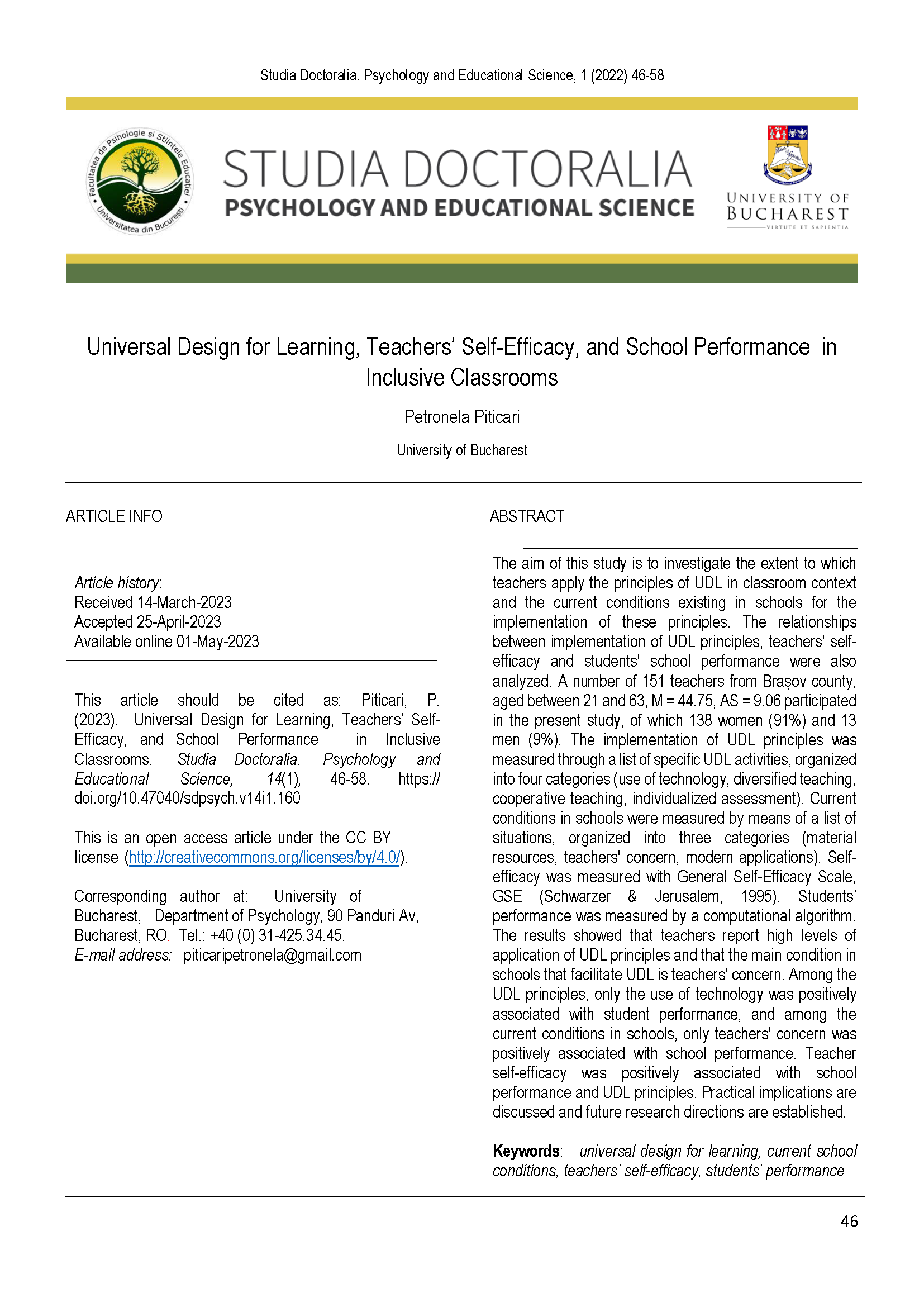Universal Design for Learning, Teachers’ Self-Efficacy, and School Performance in Inclusive Classrooms
DOI:
https://doi.org/10.47040/SDPSYCH.V14I1.160Cuvinte cheie:
universal design for learning, current school conditions, teachers’ self-efficacy, students’ performanceRezumat
The aim of this study is to investigate the extent to which teachers apply the principles of UDL in classroom context and the current conditions existing in schools for the implementation of these principles. The relationships between implementation of UDL principles, teachers' selfefficacy and students' school performance were also analyzed. A number of 151 teachers from Brașov county, aged between 21 and 63, M = 44.75, AS = 9.06 participated in the present study, of which 138 women (91%) and 13 men (9%). The implementation of UDL principles was measured through a list of specific UDL activities, organized into four categories (use of technology, diversified teaching, cooperative teaching, individualized assessment). Current conditions in schools were measured by means of a list of situations, organized into three categories (material resources, teachers' concern, modern applications). Selfefficacy
was measured with General Self-Efficacy Scale, GSE (Schwarzer & Jerusalem, 1995). Students’ performance was measured by a computational algorithm. The results showed that teachers report high levels of application of UDL principles and that the main condition in schools that facilitate UDL is teachers' concern. Among the UDL principles, only the use of technology was positively
associated with student performance, and among the current conditions in schools, only teachers' concern was positively associated with school performance. Teacher self-efficacy was positively associated with school performance and UDL principles. Practical implications are discussed and future research directions are established.





